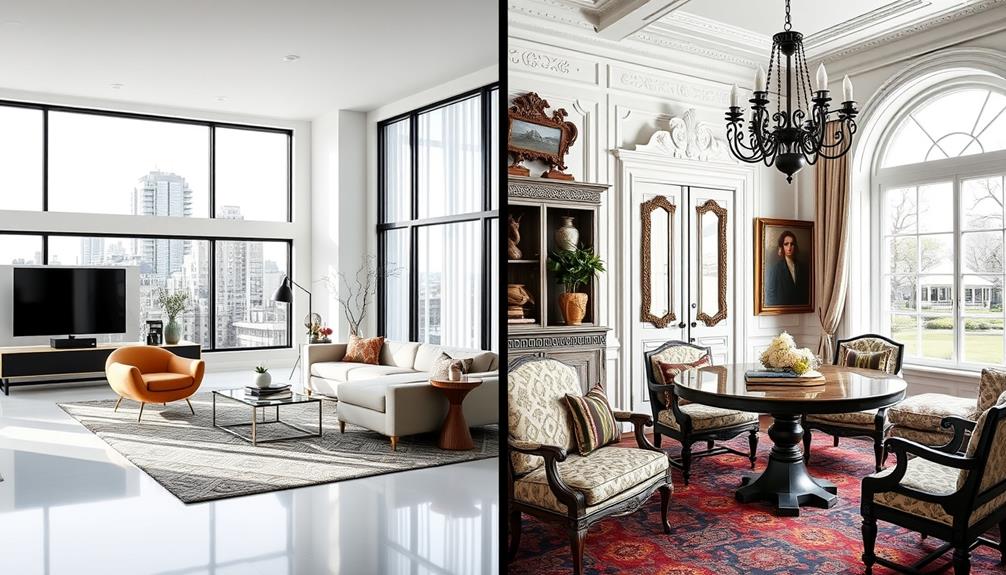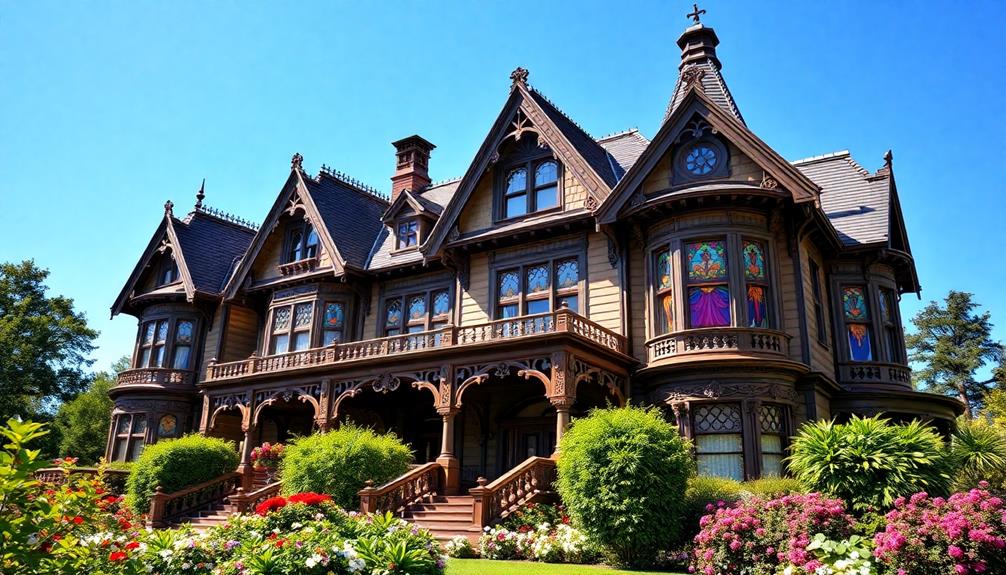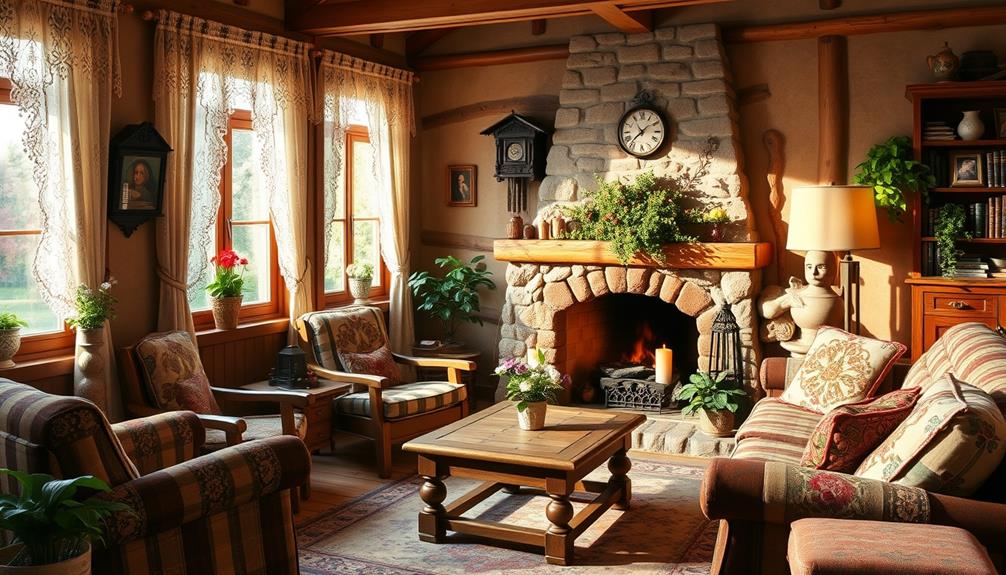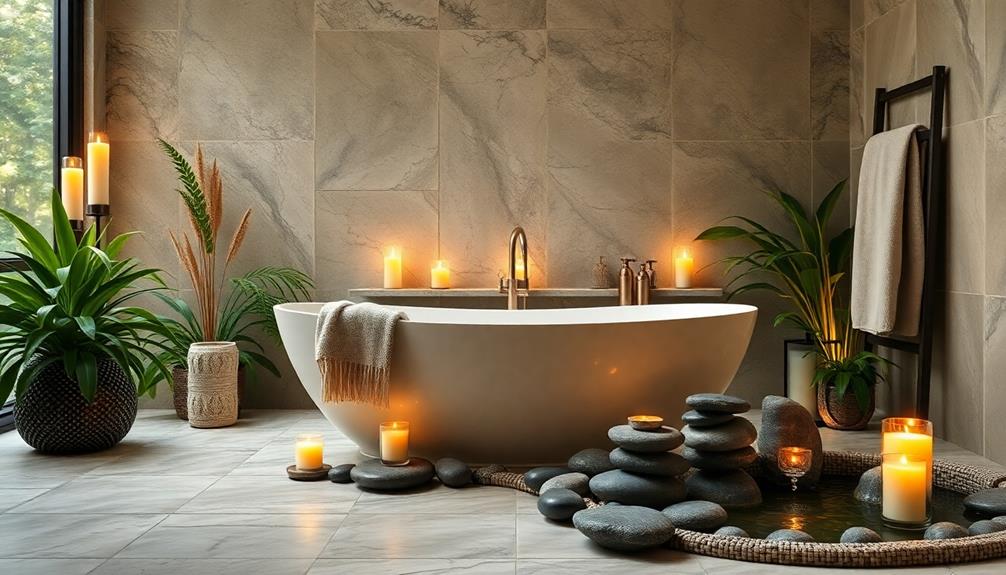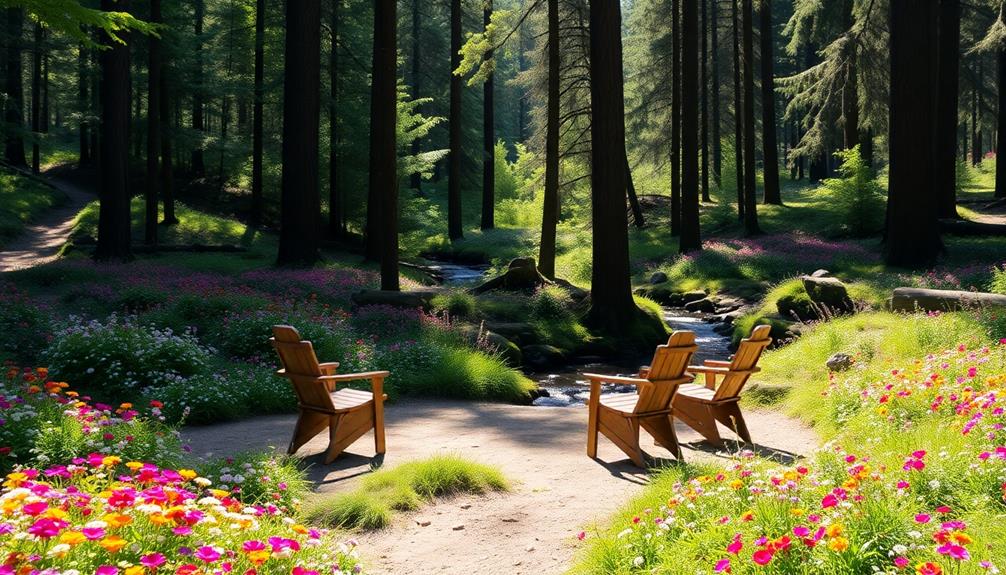When you're considering modern versus classic styles, both bring unique vibes to your space. Classic design boasts ornate details, rich woods, and warm tones that evoke a sense of tradition and comfort. On the flip side, modern style embraces clean lines, minimalism, and a palette of cool grays and whites for a fresh, airy feel. Furniture choices reflect these aesthetics—think luxurious fabrics for classic and sleek materials for modern. Symmetry characterizes classic charm, while modern spaces often utilize asymmetry for dynamic energy. Curious about how these elements play out in real-life decor? You might discover a fascinating mix.
Key Takeaways
- Classic style features ornate details and rich materials, creating a warm and sophisticated atmosphere, while modern design emphasizes simplicity and functionality.
- Color palettes differ: classic uses warm neutrals and deep jewel tones, whereas modern favors clean whites and cool grays for an airy feel.
- Furniture in classic design highlights craftsmanship with intricate details, while modern pieces prioritize clean lines and minimalistic aesthetics for practicality.
- Classic interiors evoke tradition and warmth through rich textures, while modern spaces utilize sleek materials for a contemporary edge.
- Symmetry in classic design promotes balance and harmony, while modern design embraces asymmetry for dynamic visual interest and energy.
Key Characteristics of Each Style
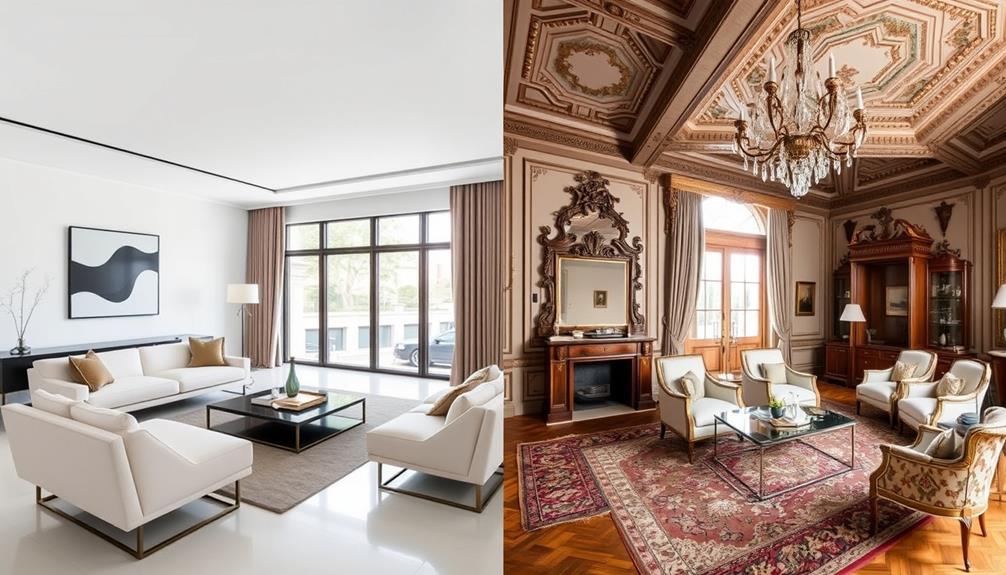
When you step into a room designed in classic style, you'll likely notice the ornate details and rich wood finishes that create an air of timeless elegance.
Classic design often features warm neutrals and deep jewel tones, evoking a sense of comfort and sophistication. You'll see intricate mouldings, luxurious fabrics, and textures like velvet and silk that enhance the space's richness.
Additionally, the use of natural materials, reminiscent of modern farmhouse decor trends, can add an element of warmth to classic spaces.
In contrast, modern design embraces simplicity and functionality, focusing on clean lines and minimalist aesthetics. You'll find a palette of cool grays and white tones, emphasizing openness and light.
Each style presents unique characteristics: classic offers tradition and warmth, while modern showcases clarity and practicality, allowing you to choose based on your personal taste and lifestyle. On the other hand, modern design incorporates sleek lines and minimalist aesthetics, perfect for those who prefer a more contemporary look. However, if you’re drawn to traditional design elements, such as ornate details, rich wood tones, and timeless decor, then a classic style might be the best fit for your home. Ultimately, the choice between classic and modern design comes down to your individual preferences and the atmosphere you want to create in your living space.
Furniture Choices: Classic vs. Modern
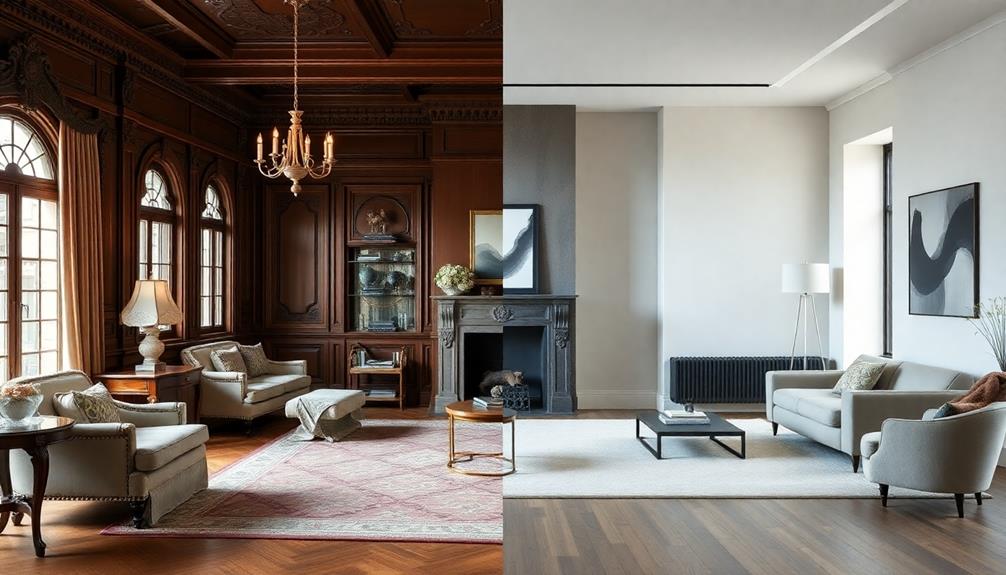
The allure of furniture choices in classic and modern styles lies in their distinct characteristics and the feelings they evoke.
In classic design, you'll find elegant pieces adorned with ornate details and rich woods, showcasing meticulous craftsmanship. Luxurious fabrics like velvet and silk add a touch of warmth and sophistication to your space, often telling a story of captivating narratives that enhance the overall ambiance.
On the other hand, modern furniture emphasizes simplicity, featuring clean lines and minimalistic designs. Here, functionality reigns supreme, balancing style with practicality. You might appreciate how modern pieces use contemporary materials like metal and plastic, creating an airy and uncluttered feel.
Color Palette Comparisons

Exploring color palette comparisons reveals how classic and modern styles create distinctly different atmospheres.
In classic design, you'll find warm neutrals like creamy beige and rich brick tones that evoke coziness and elegance. As curiosity fosters social connections, deep greens and navy shades add depth, enhancing the timeless feel.
On the other hand, modern design leans toward clean whites and cool grays, promoting an airy, open ambiance. Sharp black accents provide striking contrast, emphasizing simplicity.
While classic palettes exude warmth and tradition, modern palettes embrace a fresh, contemporary chic. Your choice between these styles will greatly influence the mood of your space, inviting you to reflect on how colors can transform your environment and convey your personal aesthetic.
Design Elements and Aesthetics
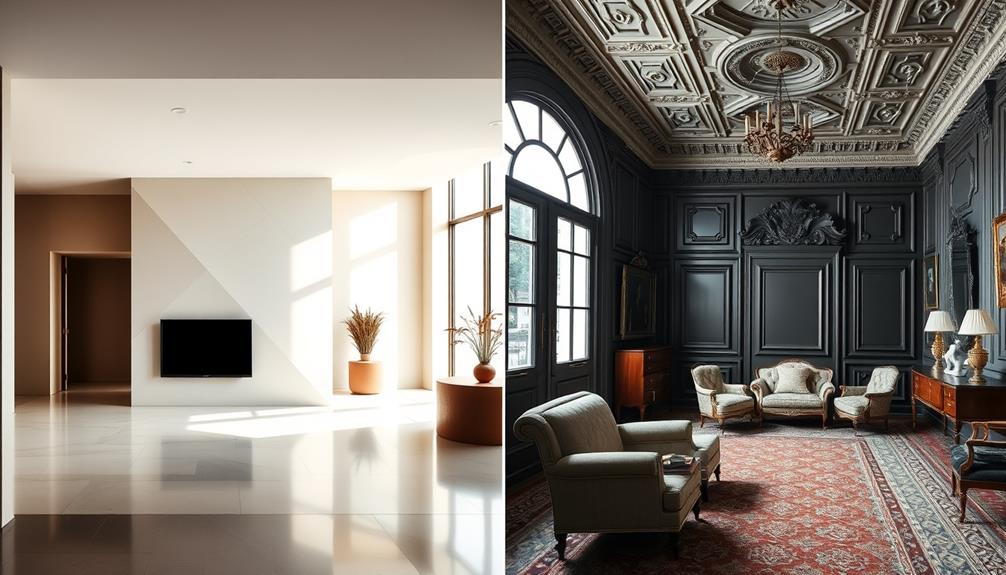
Design elements play an essential role in defining the aesthetic of a space, influencing how you experience your surroundings.
When you consider modern versus classic styles, you'll notice distinct differences:
- Lines: Modern design embraces clean, straight lines, while classic style features ornate, curved shapes.
- Functionality: Modern spaces prioritize practicality, merging style with efficiency; classic interiors often focus on decorative details.
- Color: Classic designs use rich, warm tones, whereas modern aesthetics favor clean whites and cool grays.
- Ambiance: Classic styles evoke a sense of tradition and warmth, while modern styles create a fresh, airy atmosphere.
Textures and Material Distinctions
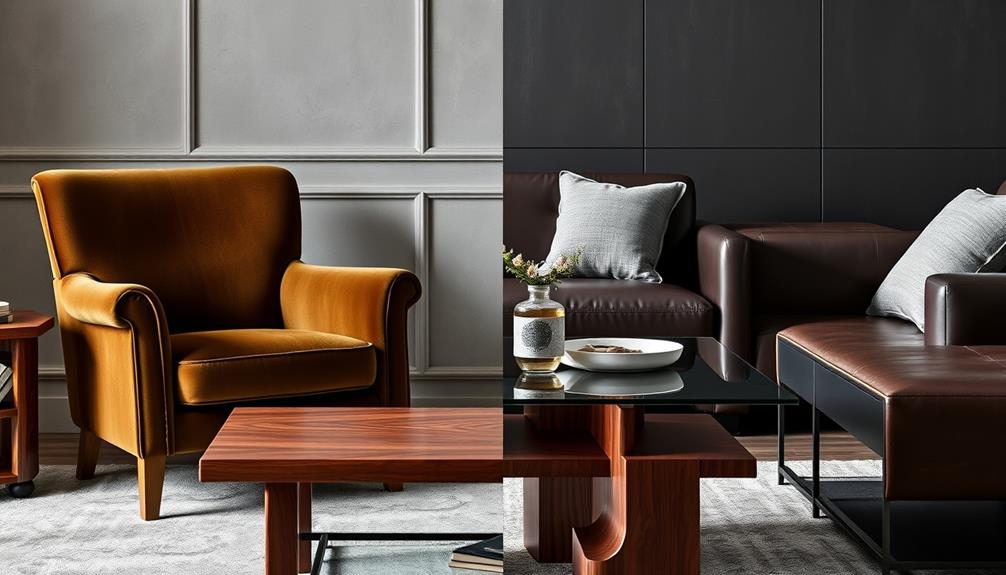
When it comes to textures and materials, classic and modern styles present distinct contrasts that shape the overall feel of a space.
Classic design often embraces rich textures like velvet, silk, and intricate mouldings, creating a sense of warmth and elegance. You'll find ornate details, such as crystal chandeliers, that evoke tradition and history.
On the other hand, modern design prioritizes simplicity with sleek materials like metal and plastic, emphasizing functionality over embellishment. This minimalist approach results in a clean, contemporary edge.
The choice between these materials can greatly influence your environment, with classic styles offering depth and richness, while modern aesthetics foster an airy, uncluttered vibe.
Ultimately, your preference will dictate the mood you create in your space.
Lines, Shapes, and Their Impact
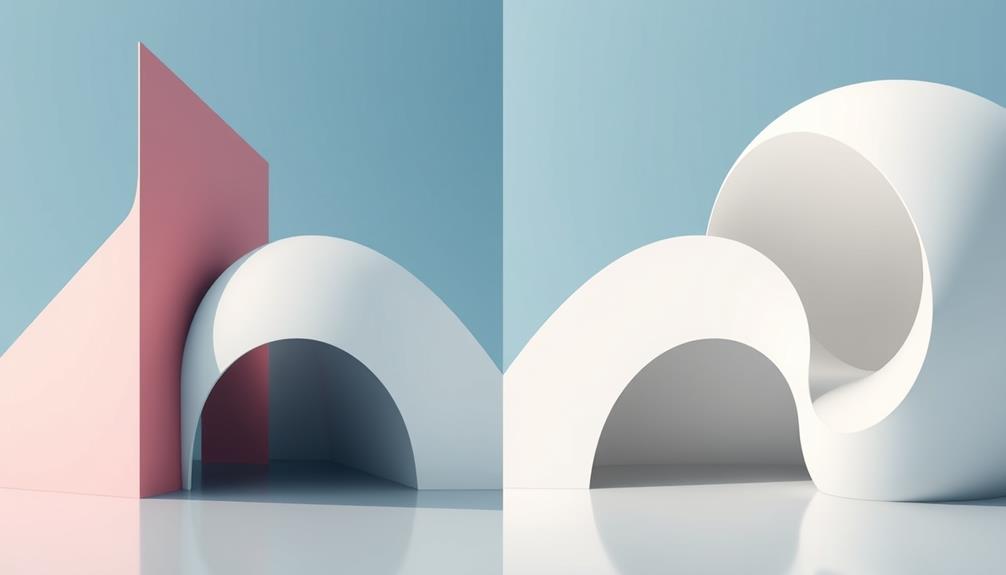
In both classic and modern styles, the choice of lines and shapes greatly influences the overall aesthetic of a space.
Modern design often embraces clean, straight lines, creating a sleek and minimalist look. In contrast, classic design features more ornate and intricate shapes, adding richness and detail.
Here are some key impacts of lines and shapes in design:
- Modern Lines: Promote simplicity and a sense of order.
- Classic Curves: Enhance visual interest and elegance.
- Angular Forms: Create a contemporary edge in modern aesthetics.
- Ornate Shapes: Add character and historical depth in classic styles.
Symmetry vs. Asymmetry in Design
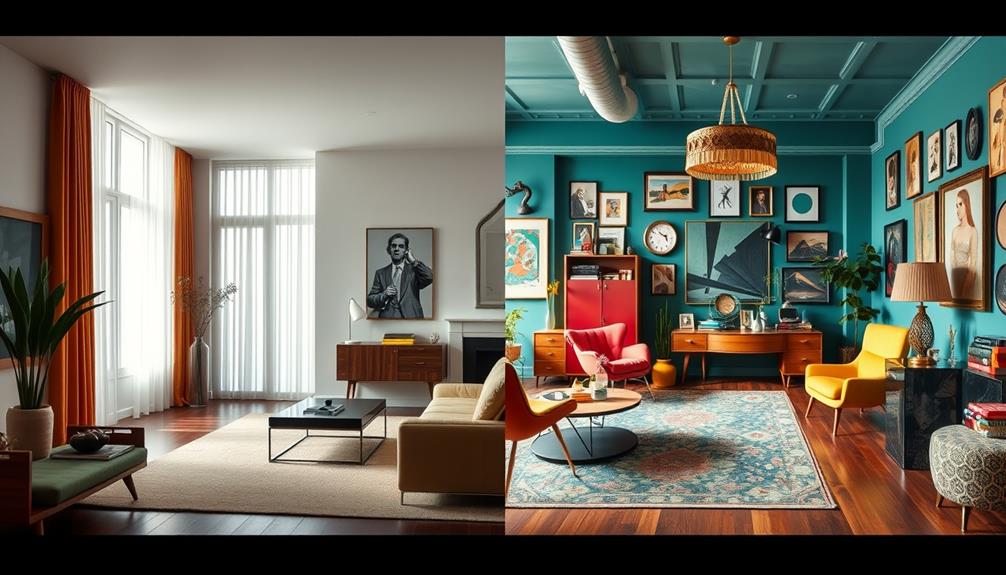
Symmetry and asymmetry play crucial roles in shaping the ambiance of a space, each offering distinct emotional responses and visual dynamics. In classic design, symmetry creates a sense of order and elegance, making rooms feel more formal and balanced. On the other hand, asymmetrical arrangements in modern spaces inject energy and intrigue, drawing the eye in unexpected directions.
| Symmetry in Classic Design | Asymmetry in Modern Design |
|---|---|
| Promotes harmony and balance | Encourages dynamic movement |
| Evokes formality and tradition | Creates visual interest |
| Often uses matching elements | Utilizes contrasting shapes |
Whether you prefer the classic elegance of symmetry or the playful unpredictability of asymmetry, each approach can profoundly affect your space's mood.
Frequently Asked Questions
How Can I Blend Classic and Modern Styles in My Home?
To blend classic and modern styles in your home, mix ornate furniture with minimalist pieces, incorporate rich textures alongside clean lines, and choose a balanced color palette that harmonizes warm neutrals with sleek whites.
What Are the Best Lighting Options for Classic and Modern Designs?
"Where there's light, there's life." For classic designs, consider elegant chandeliers or sconces. In modern spaces, opt for sleek pendant lights or minimalist floor lamps. Balancing both can create a harmonious ambiance throughout your home.
Which Style Is More Suitable for Small Spaces?
For small spaces, modern design's simplicity and functionality work best. You'll appreciate clean lines and minimalism, which create an airy feel. Classic styles, while elegant, can overwhelm with ornate details and rich textures.
How Do Seasonal Decor Changes Differ Between Styles?
Seasonal decor changes reflect your style preferences. Classic decor often incorporates rich colors and ornate accents, while modern decor embraces minimalism with simple, neutral touches. You can create distinct atmospheres by adapting your decor accordingly.
Are There Specific Maintenance Tips for Classic Versus Modern Furniture?
Wondering how to keep your furniture looking great? For classic pieces, regularly dust and polish to maintain their luster. For modern styles, clean with a damp cloth, focusing on avoiding scratches and preserving sleek finishes.
Conclusion
Whether you're drawn to the timeless charm of classic design or the sleek allure of modern aesthetics, it's all about finding your perfect balance. Each style has its strengths, like two sides of the same coin, enriching your space in unique ways. Embrace the elegance or the simplicity, and let your personality shine through. With thoughtful choices, you can create a home that feels just right, reflecting who you are while keeping your guests in awe.
